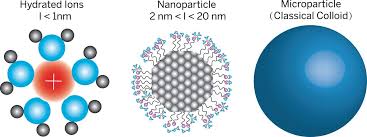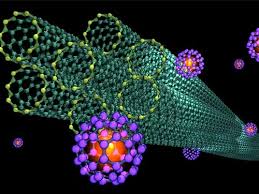Properties) or methodology of nanoparticle production based on the PhD in Nanoelectronics
Author and Researcher: Engineer Afshin Rashid
Note: Many methods have been developed for the production of nanoparticles or nanostructured particles that include vapor, liquid, and solid state processes.
In general, chemical reactions for the production of nanoparticles can occur
Each of the solid, liquid and gas states. The common method for the production of solid materials is that by shattering the particles, their contact surface is increased and, further, to increase the permeability of the atoms , the mixture is increased at elevated temperatures. In chemistry, so-called substances that initiate chemical reactions, reactants, and substances that are converted during the reaction (reactants) . The product can be solid, liquid or gas. In addition, reactants or They are either an independent element or can be in the form of multicomponent compounds. Multi-component compounds are usually called precursors.
To produce nano particles with the help of nanotechnology, atoms can be modified by controlling the properties. When studying nanoscale materials, the reactions and behavior of the atoms are compared to those at the molecular level.
They are completely different because in this realm the physical properties of the material change, just like throwing a ball into a chamber and removing another ball from that chamber. The difference in the nano realm is that even the color, melting point, chemical properties, etc. of materials outside this range are quite different.
In nanotechnology, there are two ways to build: bottom-up and top-down. In the bottom-up method, materials and materials are made of molecular surface based on the principles of molecular chemistry just like a wall made of brick-to-brick. In the top-down manufacturing process, nanotechnology objects are manufactured in larger quantities by utilizing state-of-the-art technology such as atomic microscopy and tunneling microscopy to manipulate the process and create new phenomena and properties. To emerge in nano objects. One of the important properties of nanoparticles is their high surface-to-volume ratio. With this property, powerful catalysts can be produced in nanometer dimensions. These nanocatalysts have high reaction efficiency. They will dramatically increase chemicals and will also significantly prevent the production of wastes in the reactions.
Using nanoparticles in the production of other materials can increase their strength or reduce their weight, increase their chemical and heat resistance, and alter their response to light and other radiation. After the first application of the nanoparticles can be imagined, These materials are used in the production of nanocomposites. With the use of nanoparticles, the strength-to-weight ratio of composite materials will increase dramatically.





